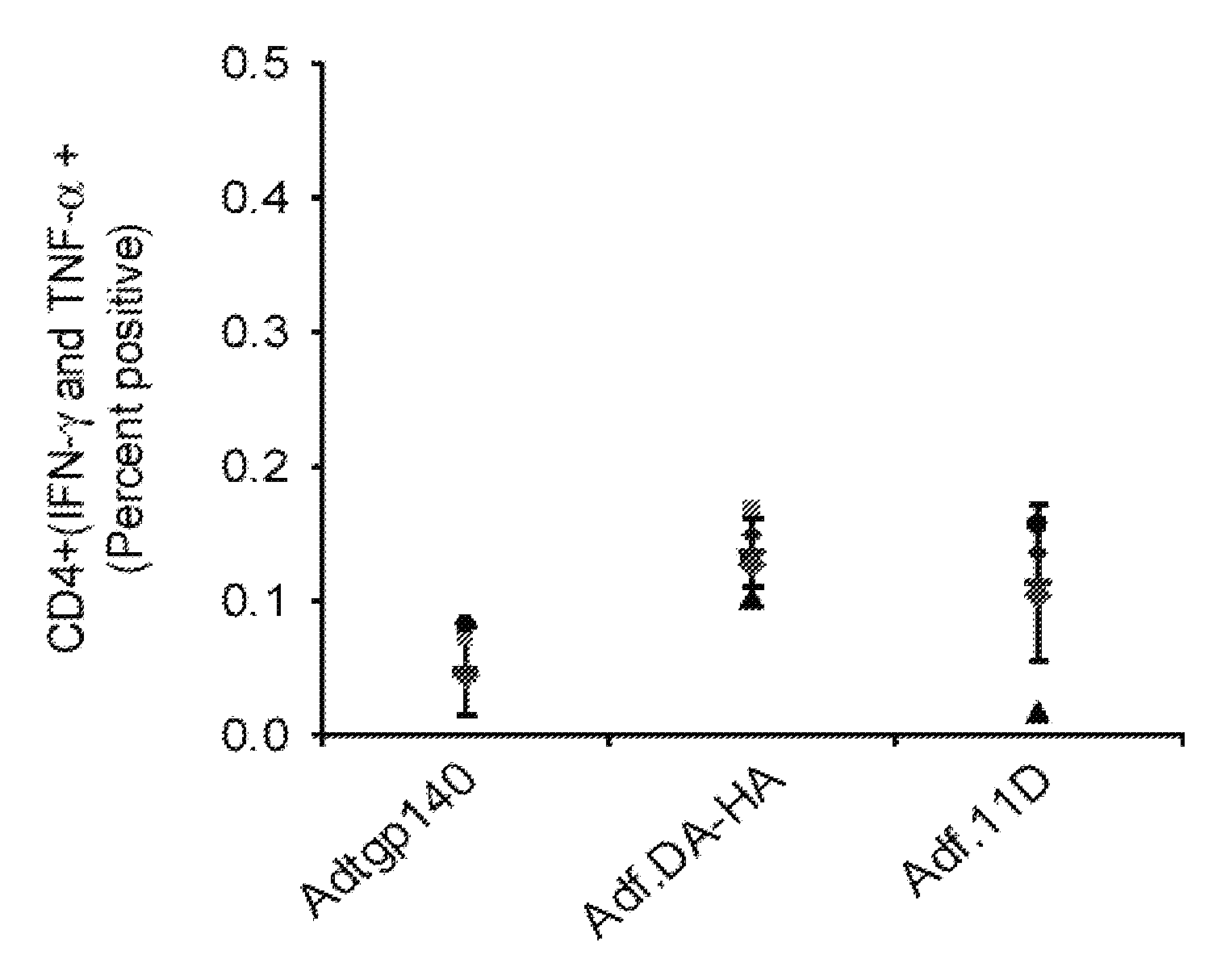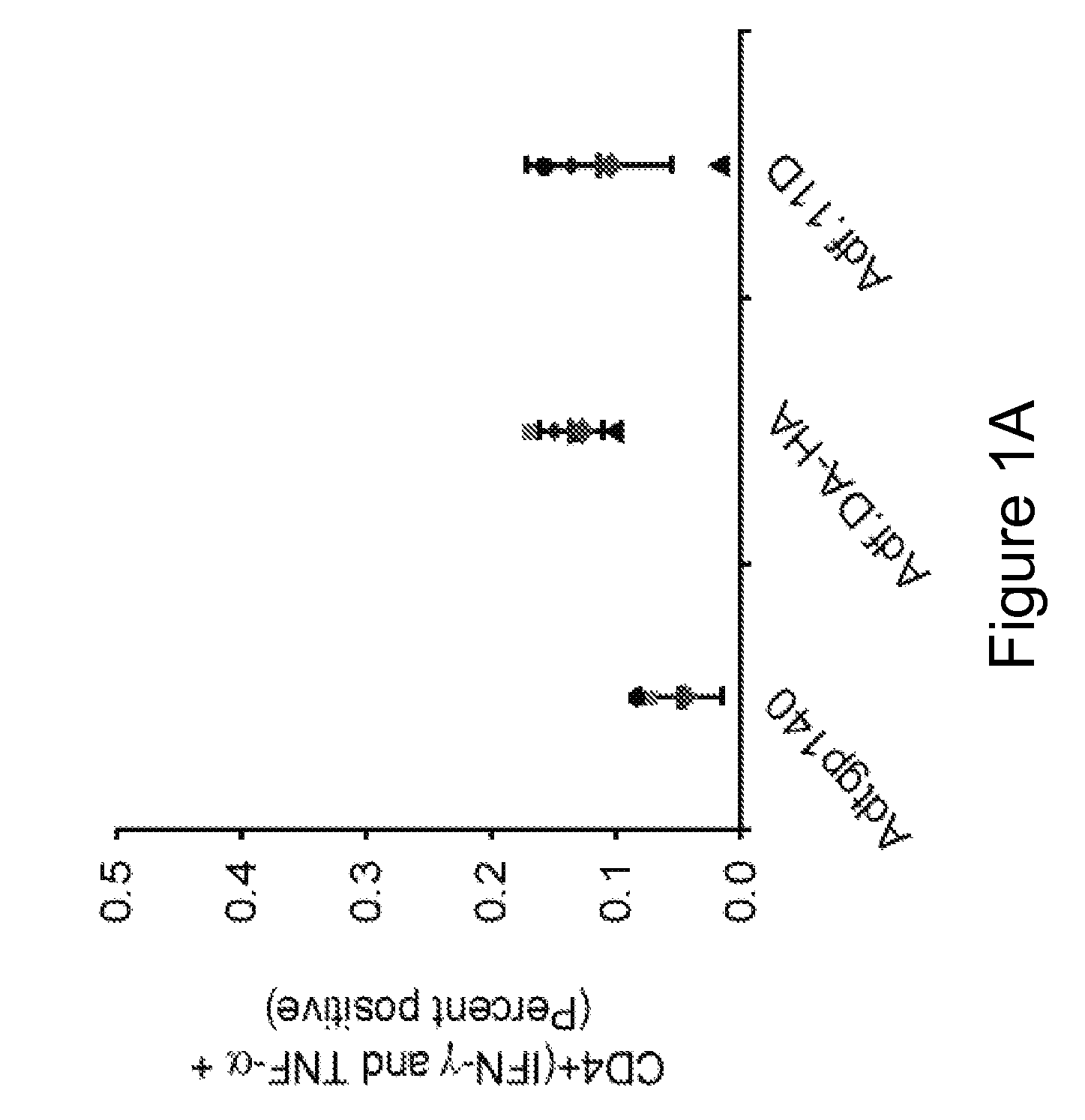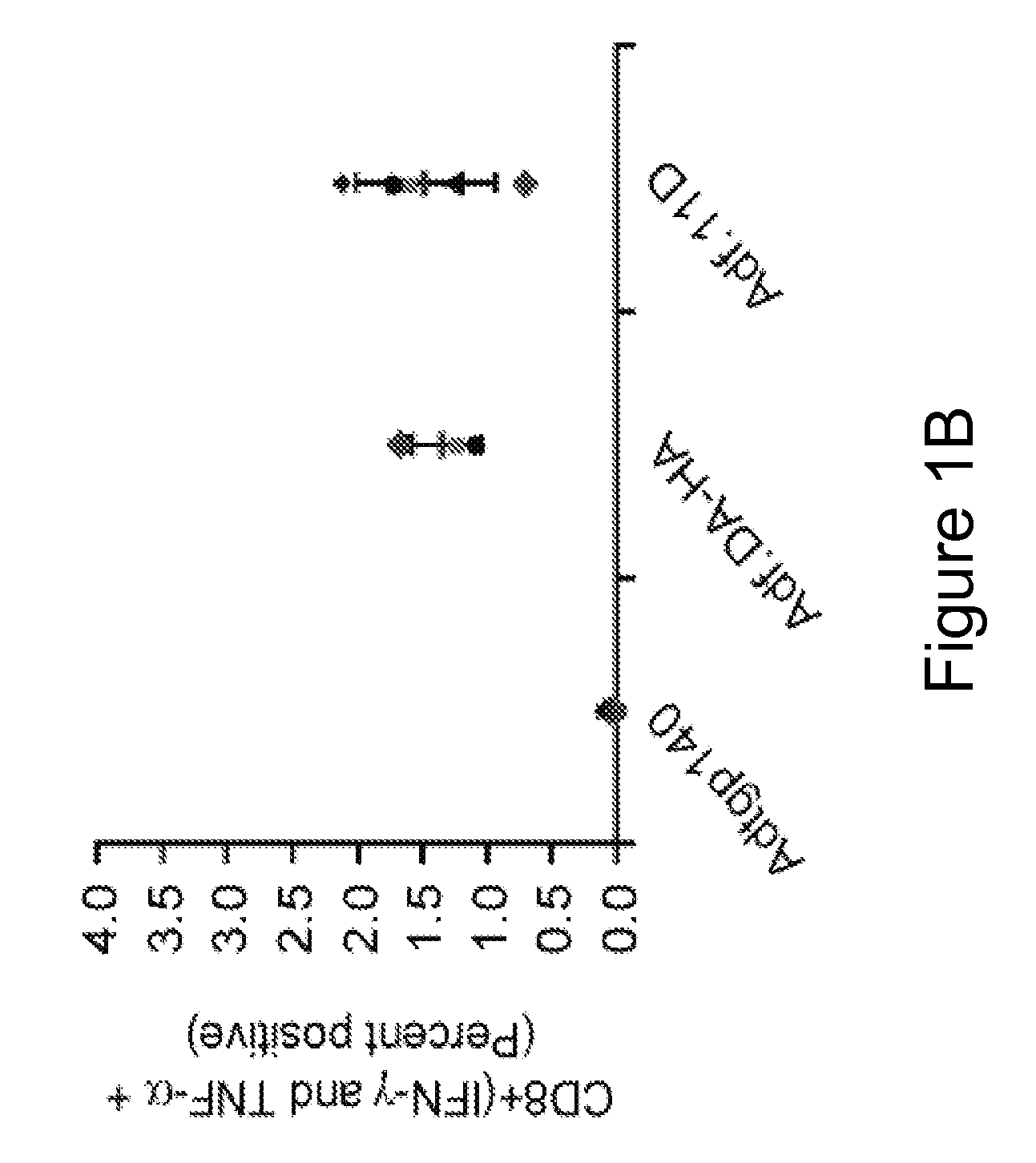Method of using adenoviral vectors with increased immunogenicity in vivo
a technology of adenoviral vectors and immunogenicity, which is applied in the direction of immunological disorders, antibody medical ingredients, dsdna viruses, etc., can solve the problems of adenoviral vector widespread use, inability to infect all cells, and inability to deliver proteins as therapeutics
- Summary
- Abstract
- Description
- Claims
- Application Information
AI Technical Summary
Problems solved by technology
Method used
Image
Examples
example 1
[0081] This example demonstrates a method of inducing an immune response in a mammal comprising administering to the mammal an adenoviral vector comprising (a) a subgroup C fiber protein wherein a native coxsackievirus and adenovirus receptor (CAR)-binding site is disrupted, (b) a subgroup C penton base protein wherein a native integrin-binding site is disrupted, and (c) a nucleic acid sequence encoding an antigen.
[0082] Adenoviral serotype 5 E1 / E3 / E4-deficient adenoviral vectors containing, in place of the deleted E1 region, a nucleic acid sequence encoding the green fluorescent protein (GFP) operably linked to the CMV promoter were generated. To reduce adenoviral fiber-mediated transduction via CAR, the CAR-binding domain of the adenoviral fiber protein and the integrin-binding domain of the adenoviral penton base protein were disrupted (Adf.DA-HA) (“double ablation” vector). For comparison, a corresponding GFP-expressing adenoviral vector containing wild type capsid proteins (Ad...
example 2
[0086] This example demonstrate the ability of a subgroup C adenoviral vector ablated for native binding to efficiently transduce professional antigen presenting cells.
[0087] A double ablation adenoviral vector encoding the luciferase gene instead of GFP (Adf.DA-HA.luc) was generated as described in Example 1. The specificity of Adf.DA-HA.luc was evaluated in murine bone marrow-derived dendritic cells (DC). Specifically, murine bone marrow (BM) dendritic cells were infected with Adf.DA-HA.luc in cells gated for the CD19 and CD11c dendritic cell markers. For comparison, corresponding GFP-expressing and luciferase-expression adenoviral vectors containing wild type capsid proteins also were tested. A dose-response analysis was performed with different multiplicity of infections (MOI) in BM or plasmacytoid dendritic cells of mouse or human origin.
[0088] Adf.DA-HA.luc readily infected bone marrow cells (see FIGS. 2A and 2B), and Cd19-Cd11c+cells (see FIG. 2A). Adf.DA-HA.luc also transd...
PUM
| Property | Measurement | Unit |
|---|---|---|
| nucleic acid sequence | aaaaa | aaaaa |
| nucleic acid | aaaaa | aaaaa |
| size | aaaaa | aaaaa |
Abstract
Description
Claims
Application Information
 Login to View More
Login to View More - R&D
- Intellectual Property
- Life Sciences
- Materials
- Tech Scout
- Unparalleled Data Quality
- Higher Quality Content
- 60% Fewer Hallucinations
Browse by: Latest US Patents, China's latest patents, Technical Efficacy Thesaurus, Application Domain, Technology Topic, Popular Technical Reports.
© 2025 PatSnap. All rights reserved.Legal|Privacy policy|Modern Slavery Act Transparency Statement|Sitemap|About US| Contact US: help@patsnap.com



